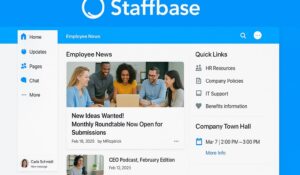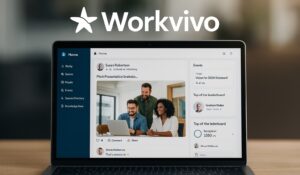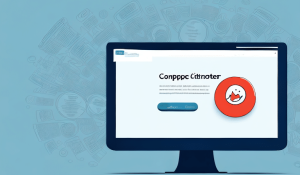In today’s global workplace, effective communication depends on more than just fast updates—it depends on inclusivity. A multilingual intranet software ensures that every employee, whether they’re in corporate headquarters or on the frontline, can access company news, policies, and resources in their preferred language.
This is not just a convenience. In the U.S., for example, many organizations employ frontline staff who primarily speak Spanish, Creole, or other languages. Without a multilingual intranet, vital updates can get lost in translation—leading to disengagement, errors, and compliance risks.
With auto-translation built into your modern intranet software, companies create a more connected, productive, and inclusive workforce.
Why Companies Need a Multilingual Intranet
The rise of global and distributed workforces has made multilingual access to information a necessity, not a luxury.
- Global Workforce Trends: 54% of surveyed organizations have employees in two or more countries, including over 20% that operate in 10 or more. Even U.S.-only businesses often rely on multilingual teams in manufacturing, healthcare, hospitality, and retail.
- DEI & Accessibility: Inclusive teams are over 35% more productive. Offering intranet language support aligns with DEI initiatives, ensuring all employees feel included, valued, and heard.
- Regulatory & Safety Needs: Compliance policies, safety manuals, and SOPs must be clearly understood across languages to reduce risk.
For organizations evaluating intranet for companies, multilingual capabilities should now be on the short list of must-have features.
Key Benefits of Auto-Translation in Intranet Platforms
A multilingual employee portal with auto-translation helps companies go beyond basic communication to deliver measurable business impact:
- Real-Time Translations for Announcements
Critical updates, crisis communications, and company-wide broadcasts can be automatically translated into employees’ preferred languages—reducing misinterpretation. - Multilingual Newsletters & SOPs
Pair your intranet with intranet communications and automated employee newsletter templates to ensure content is instantly accessible to everyone. For industries like healthcare and manufacturing, SOP management in multiple languages is essential for compliance. - Inclusivity & Engagement
When employees receive communications in their own language, adoption of the intranet skyrockets. Engagement tools—recognitions, social feeds, polls—work best when everyone can participate equally. - Efficiency & Cost Savings
Auto-translation eliminates reliance on manual translators for day-to-day updates. Companies save thousands while improving speed of communication.
How HubEngage Delivers a Global Multilingual Intranet
HubEngage’s employee intranet platform includes AI-powered auto-translation with support for dozens of languages. Unlike legacy platforms, HubEngage ensures:
- Real-time translations for news feeds, messages, recognition posts, and surveys.
- Dynamic multilingual content delivery—employees set a preferred language and the intranet automatically adapts.
- AI-improved accuracy, with context-aware translations for workplace terminology.
- Mobile-first experience, crucial for frontline and deskless workers.
Examples:
- Manufacturing: Spanish-speaking production staff receive shift updates instantly.
- Retail: Global brand announcements go out in 15+ languages at once.
- Healthcare: Nurses and support staff access multilingual SOPs and training content.
Compared to SharePoint (complex manual localization), LumApps (strong in corporate comms but limited frontline usability), and Staffbase (good multilingual support but heavier IT overhead), HubEngage offers a balanced solution for both corporate HQ and frontline workers.
Multilingual Intranet vs. Localized Intranet
It’s important to distinguish between two approaches:
- Multilingual Intranet (Auto-Translation): Automatically converts all intranet content into multiple languages instantly. Best for fast, everyday communication.
- Localized Intranet: Manually curated content adapted for cultural nuance, tone, and local regulations. Best for high-stakes communications like HR policies or leadership videos.
A hybrid approach often works best: use automated translation for speed and localized intranet content for cultural depth.
Choosing the Right Intranet Software for a Global Team
When evaluating best intranet software, global organizations should prioritize:
✅ Scalability: Can the intranet support dozens of regions and languages?
✅ Mobile-first: Intranet Apps are essential for deskless and frontline employees.
✅ Admin controls: Easy content management and translation settings for HR and Comms teams.
✅ Integration: With email, chat, signage, and mobile alerts for full reach.
Platforms like SharePoint, LumApps, and Staffbase provide varying levels of translation—but only HubEngage unifies auto-translation + employee engagement + multi-channel messaging in one platform.
👉 See HubEngage’s employee intranet solution in action.
Conclusion: Power Global Communication with a Multilingual Intranet
A multilingual intranet is more than a feature—it’s the foundation of global employee engagement. By ensuring employees can access and interact with content in their preferred language, companies build stronger connections, reduce miscommunication, and foster inclusivity across borders.
HubEngage helps organizations scale these capabilities with AI-driven, multilingual intranet software that connects every employee—corporate, frontline, and global.
Ready to break down language barriers? Book a demo of HubEngage’s multilingual intranet and power your global workforce with inclusive communication.
FAQs
What is multilingual intranet software?
It’s an intranet platform that supports multiple languages, often with built-in auto-translation so employees can access content in their preferred language.
Why is auto-translation important in intranet platforms?
It reduces miscommunication, improves engagement, and ensures every employee—frontline or corporate—can participate equally, without relying on manual translation.
What’s the difference between multilingual and localized intranet?
Multilingual intranets use AI to translate content instantly, while localized intranets adapt content manually for cultural and legal nuance. Most global companies use a hybrid.
Which intranet platforms support auto-translation?
HubEngage, Staffbase, and LumApps all support multilingual capabilities. SharePoint typically requires more manual setup or third-party plugins. HubEngage stands out for balancing automation, engagement, and mobile-first usability.
What is the best intranet platform for a diverse workforce?
The best intranet platform for a diverse workforce is one that combines multilingual support, mobile-first access for frontline teams, and inclusive engagement tools. HubEngage excels by offering AI-driven auto-translation, multi-channel communication, and recognition features that ensure every employee—regardless of language or role—feels included and connected. Other platforms like LumApps and Staffbase provide multilingual support as well, but HubEngage is uniquely designed to unify global and diverse teams.













